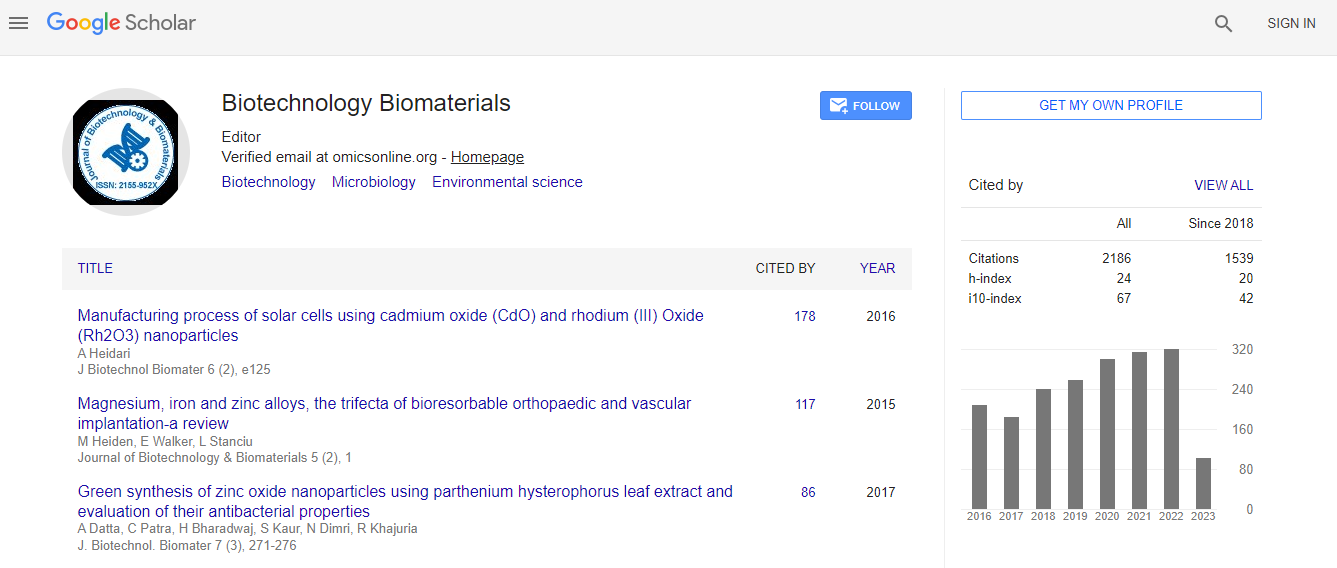Research Article
Bioactive Sol Gel Coatings Applied Using the Pneumatic Spray Technique on AISI 316L Stainless Steel
Rendón J1, Toro A1 and Garcia C2*1Tribology and surfaces Group, Universidad Nacional de Colombia, Medellín-Colombia
2Claudia Garcia, Physics school. Universidad Nacional de Colombia sede Medellín, Colombia
- Corresponding Author:
- Claudia Garcia
Physics school, Universidad Nacional de Colombia sede Medellín
Calle 59A # 63-20 Medellín, Colombia
Tel: 574430984
Fax: 5744309327
E-mail: cpgarcia@unal.edu.co
Received date: December 17, 2014, Accepted date:: March 30, 2015, Published date:: April 06, 2015
Citation: Rendón J, Toro A and Garcia C (2015) Bioactive Sol Gel Coatings Applied Using the Pneumatic Spray Technique on AISI 316L Stainless Steel. J Biotechnol Biomater 5:174. doi:10.4172/2155-952X.1000174
Copyright: © 2015 Claudia G et al. This is an open-access article distributed under the terms of the Creative Commons Attribution License, which permits unrestricted use, distribution, and reproduction in any medium, provided the original author and source are credited.
Abstract
Bioactive coatings were obtained via the sol gel method and deposited on stainless steel AISI 316L using a pneumatic spray. TEOS and MTES were used as precursors, obtaining a hybrid sol; wollastonite bioactive particles were dispersed inside the sol. The corrosion resistance of the coatings was tested with potentiodynamic curves after immersion of the coatings in SBF for 7 and 40 days. It was possible to obtain coatings with a thickness of 47.7 ± 8 μm. In comparison with other methods of deposition, it was possible to obtain thicker coatings with the pneumatic spray deposition technique, giving the substrate a better protection factor against corrosion. After immersion in SBF (simulated physiologic fluid), the formation of an appetite film on the surface and inside the pores was observed. Deposition of the apatite film helps to promote Osseo integration, and the product formation inside the pores helps to improve corrosion resistance of the substrate.

 Spanish
Spanish  Chinese
Chinese  Russian
Russian  German
German  French
French  Japanese
Japanese  Portuguese
Portuguese  Hindi
Hindi 
